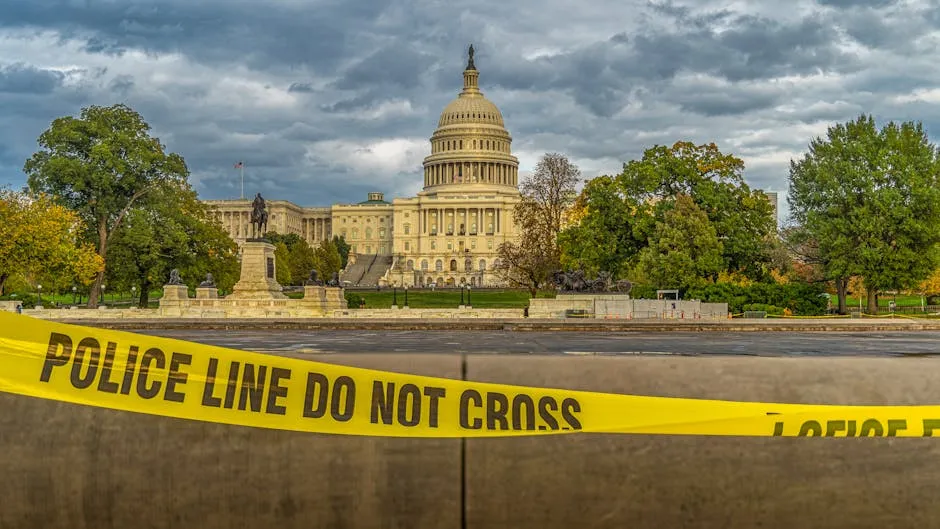Introduction
Understanding crime statistics in Connecticut isn’t just a numbers game; it’s crucial for public safety, policy-making, and community awareness. Picture this: crime data is like a high-tech crystal ball, offering insights into the safety of neighborhoods and guiding local leaders in creating effective policies. When communities grasp these statistics, they can work together to build environments where everyone feels safe.
Connecticut’s crime landscape has seen a bit of a rollercoaster ride over the years. Recent reports indicate a decrease in overall crime rates, reflecting a trend towards safer streets. For instance, from 2021 to 2022, violent crimes dropped by a notable 13%. This decline can be attributed to various factors, including community initiatives, enhanced law enforcement strategies, and perhaps a touch of good fortune.
Now, let’s emphasize the importance of data. Accurate crime data is not just a collection of figures; it’s the backbone of effective law enforcement. Policymakers rely on these numbers to allocate resources and implement programs. For residents, understanding crime trends helps them make informed decisions about their safety. Whether you’re a wary parent or a curious citizen, crime statistics provide a clearer picture of your surroundings.
Speaking of understanding crime, if you want a deeper dive into the psychology of crime and justice, check out The Body Keeps the Score. It’s not just about crime; it’s about healing and understanding the human experience.
In summary, this article aims to shed light on Connecticut crime statistics, exploring trends, analyzing data, and providing insights. We’ll dive into how these numbers are collected and why they matter. By the end, you’ll appreciate the significance of crime data in fostering a secure and informed community.

Understanding Crime Statistics in Connecticut
What Are Crime Statistics?
Crime statistics are more than just dry numbers; they represent real incidents that affect people’s lives. Essentially, these statistics quantify crime occurrences, helping us understand the safety of our communities. They play a vital role in public safety and law enforcement, offering insights into crime trends and patterns.
So, how do we collect this data? In Connecticut, the Connecticut Uniform Crime Reporting (UCR) Program serves as a primary source for crime statistics. This program compiles reports from local law enforcement agencies across the state. Additionally, the National Incident-Based Reporting System (NIBRS) provides a more detailed account of incidents. It captures varying types of crimes, demographics, and circumstances surrounding each offense.
These systems help paint a vivid picture of crime in Connecticut. Law enforcement agencies submit data regularly, allowing for timely updates and analysis. This meticulous collection process ensures that policymakers, law enforcement, and the public have access to accurate and relevant information.
Speaking of understanding crime, if you’re intrigued by the intersection of law and society, consider reading The New Jim Crow. It’s a thought-provoking read that unpacks the complexities of the criminal justice system.
In conclusion, crime statistics are essential tools for understanding and combating crime. They allow us to identify trends, allocate resources, and ultimately create safer communities. So, next time you hear about crime data, remember it’s not just numbers—it’s a reflection of our collective safety and well-being.

Overview of the Crime Reporting Process
Data Collection
In Connecticut, the crime reporting process begins with local law enforcement agencies. These agencies diligently document every crime reported to them. They then submit this data to state and federal databases, primarily through the Connecticut Uniform Crime Reporting (UCR) Program. This system ensures that the information collected is consistent and reliable.
Furthermore, the National Incident-Based Reporting System (NIBRS) also plays a significant role. It provides a more detailed account of each incident, including various demographics and circumstances surrounding the offenses. This dual system allows for a comprehensive overview of crime trends within the state.
Annual Reports
Every year, the Connecticut Department of Emergency Services and Public Protection releases an annual crime report. These reports are essential in analyzing crime trends and patterns over time. They offer insights into the effectiveness of law enforcement strategies and community programs aimed at reducing crime.
By the way, if you ever feel like you need to secure your valuables while delving into this data, consider investing in a Home Safe for Valuables. It’s a smart way to keep your important items secure!
The importance of these annual reports cannot be overstated. They not only inform policymakers about where to allocate resources, but they also help the public stay informed about crime in their neighborhoods. By analyzing these reports, residents can make informed decisions about their safety, creating a more vigilant and cohesive community.

Key Crime Statistics in Connecticut
Overall Crime Rate Trends
Connecticut has experienced notable shifts in its overall crime rates. In 2022, the state reported a total of 59,616 crimes, resulting in a crime rate of 16.44 per 1,000 residents. This marked a 4% decrease from the previous year, showcasing a positive trend towards safer communities.
When we break it down, violent crimes accounted for 5,441 incidents, translating to a rate of 1.50 per 1,000 residents. In comparison, property crimes were significantly higher, with 54,175 offenses recorded, leading to a rate of 14.94 per 1,000 residents. This disparity highlights the ongoing challenge of property crime in the state.
When we analyze the data from previous years, a clear trend emerges. From 2021 to 2022, violent crimes dropped by 13%, continuing a decade-long decline. This decrease is significant, as it reflects the lowest violent crime rate Connecticut has seen in years. Similarly, property crime rates have also shown a downward trajectory, indicating that efforts to enhance public safety are gaining traction.
If you’re curious about crime in a broader context, consider reading The Crime Book: Big Ideas Simply Explained. It’s a great way to understand the complexities of crime in society.

Violent Crime Rates
Diving into the details of violent crime statistics reveals some eye-opening numbers. In 2022, Connecticut recorded 136 murders, maintaining a rate of 0.04 per 1,000 residents. This rate is notably lower than the national median, illustrating that Connecticut remains one of the safer states in terms of homicide.
Rape incidents also saw an uptick, with 656 reported cases, translating to a rate of 0.18 per 1,000 residents. Robberies accounted for 1,629 offenses, while aggravated assaults were the most prevalent, with 3,020 incidents reported.
The implications of these statistics are profound. With a chance of becoming a victim of violent crime at 1 in 666, residents may feel relatively safe. However, public perception can sometimes differ. Discussions around crime often focus on sensational incidents, which can skew perceptions of safety even when statistics show improvements.
By understanding these violent crime rates, we can better gauge community safety. The data provides insights that can foster dialogues around public safety initiatives, community engagement, and resource allocation for law enforcement. In conclusion, while the statistics indicate progress, they also remind us of the ongoing work needed to ensure the safety of all Connecticut residents.

Property Crime Rates
Connecticut’s property crime rates tell a story of ups and downs. In 2022, the state recorded 54,175 property crimes, giving it a rate of 14.94 per 1,000 residents. But how does that stack up against the national average? Spoiler alert: it’s lower! The national average for property crime stands at 20 per 1,000 residents.
Breaking it down further, we see burglary accounted for 4,716 incidents, while theft reigned supreme with a whopping 42,359 cases. And don’t forget motor vehicle theft, which saw 7,100 vehicles snatched away. So, while property crime poses a challenge, Connecticut is faring better than many states across the country.
To keep your home safe from property crime, consider investing in a Home Security Camera System. It’s a proactive step towards protecting your property.

Crime by City and Town
When we zoom in on the crime landscape at the city and town level, some areas shine while others reveal a bit of a shadow. Notable hotspots with higher crime rates include New Haven and Hartford, while towns like Ridgefield and Scotland boast the lowest crime rates.
A quick glance at the data reveals:
| City/Town | Property Crime Rate (per 1,000 residents) |
|---|---|
| New Haven | 37.72 |
| Hartford | 28.08 |
| Bridgeport | 17.00 |
| Ridgefield | 2.70 |
| Scotland | 0.00 |

These figures highlight a stark contrast: while some cities wrestle with high crime rates, others provide a safe haven for their residents. If you’re curious about crime fiction that explores these themes, consider Crime and Punishment. It’s a classic that delves deep into the human psyche and morality.

Analysis of Recent Trends
Year-on-Year Comparisons
The crime scene in Connecticut has been anything but static. If we look back at the last few years, there’s been a notable decline in crime rates. From 2021 to 2022, overall crime dropped by 4%. This decrease is commendable, especially when we consider the context of post-pandemic life, where many feared a spike in crime due to economic instability.
In the world of violent crime, the state saw a 13% dip between 2021 and 2022, dropping from 6,272 offenses to 5,464. The numbers tell a tale of both caution and hope. For example, murder rates decreased from 158 to 136. Meanwhile, motor vehicle thefts have been a bit trickier. While they fell 8.5% from 2021 to 2022, they’ve risen 14% since 2013. It seems our cars are still a target of temptation!
But it’s not just about the numbers; it’s essential to grasp the underlying factors. For instance, during this period, various community initiatives aimed to enhance public safety. Local police departments increased their outreach efforts, forging partnerships with residents to address crime proactively.
If you want to explore more about the criminal justice system and its intricacies, check out The Truth About Crime. It sheds light on the myths surrounding our justice system.
So, what spurred these shifts? Economic factors played a role, but so did policy changes. The state has invested in community policing and crime prevention strategies, which have proven effective.
Moreover, the impact of the COVID-19 pandemic cannot be overlooked. As people returned to normalcy, crime rates stabilized, indicating that the initial pandemic-related spikes were anomalies rather than the new norm.
In conclusion, while Connecticut’s crime rates have fluctuated, the trend is generally leaning towards improvement. The continued focus on community engagement and proactive law enforcement strategies will be key to maintaining this positive trajectory. As we move forward, keeping a close eye on these statistics and trends will be vital for residents and policymakers alike.

Hotspots and Safe Zones
Connecticut’s crime landscape presents a mix of challenges and successes. Certain areas are notorious for higher crime rates, often referred to as hotspots. Cities like New Haven, Hartford, and Waterbury frequently top the list of crime-ridden locales. New Haven, for example, has a property crime rate of 37.72 per 1,000 residents, which is quite alarming. Hartford follows closely, with a similar trend.
On the flip side, Connecticut also boasts some safe havens. The top ten safest cities include:
- Scotland
- Ridgefield
- Killingworth
- Warren
- Lyme
- Sherman
- Marlborough
- Canaan
- Chaplin
- Norfolk
These cities enjoy lower crime rates due to various factors such as community engagement, effective law enforcement, and economic stability. Access to resources and active neighborhood watch programs also contribute to their serenity, allowing residents to breathe a little easier.
If you’re interested in how crime affects different communities, consider reading The Innocent Man. It’s a gripping tale that sheds light on the complexities of justice.

Impact of Legislative Changes
Legislative changes can significantly shift crime rates in Connecticut. For instance, recent gun control laws aim to reduce violent crime. Research shows a strong correlation between stricter gun laws and lower rates of gun-related incidents. Similarly, reforms in the juvenile justice system focus on rehabilitation rather than punishment, potentially reducing future crime rates.
Community responses to these changes vary. Some residents celebrate the new laws as steps toward a safer future. Others express concern over their effectiveness, arguing that crime may still prevail despite legislative efforts. Local discussions often center on the balance between safety and individual rights, making it a hot topic among residents and policymakers alike.

Methodologies and Sources of Data
Data Collection Methodologies
Collecting crime statistics involves meticulous methodologies. The two primary systems used in Connecticut are the Uniform Crime Reporting (UCR) Program and the National Incident-Based Reporting System (NIBRS). UCR provides a summary of crime data collected from law enforcement agencies, while NIBRS offers more detailed incident-based data, including victim and offender demographics.
UCR focuses on a limited set of offenses, such as murder and robbery, while NIBRS captures a broader range of incidents. This includes details on multiple offenses within a single incident, providing a richer dataset for analysis. As of January 2021, all Connecticut law enforcement agencies transitioned to NIBRS, enhancing the quality and depth of crime reporting.
The importance of accuracy and timeliness in crime reporting cannot be overstated. Inaccurate data can lead to misguided policies and ineffective resource allocation. Timely reporting ensures that law enforcement and communities can respond swiftly to emerging trends, ultimately enhancing public safety.
If you’re looking to equip your home for safety, consider a Smart Doorbell with Camera. It’s a great way to monitor who’s at your door!

Key Organizations and Data Sources
Several key organizations play crucial roles in collecting and analyzing crime data in Connecticut. The Connecticut State Police oversee the UCR and NIBRS programs, ensuring that local agencies submit their data accurately. The FBI also compiles national statistics, allowing for comparisons and broader insights.
However, data collection isn’t without challenges. Some smaller municipalities may struggle with reporting due to limited resources, leading to potential gaps in data. Ensuring that all agencies participate fully in reporting is essential for maintaining the integrity of crime statistics.
In summary, understanding the methodologies and sources of data behind Connecticut’s crime statistics enhances our ability to analyze trends and inform public safety initiatives. With accurate and timely information, communities can better address crime and work towards a safer environment for all.

Community Safety and Crime Prevention Strategies
Role of Law Enforcement
Law enforcement in Connecticut has stepped up its game to enhance community safety. A significant initiative is community policing, where officers engage more with residents. This effort fosters trust and cooperation, making neighborhoods feel more secure. For instance, many police departments organize events like neighborhood watch meetings and community forums. These gatherings allow citizens to voice concerns and collaborate with law enforcement.
Additionally, partnerships with local organizations have proven effective. Connecticut police departments often work alongside community groups to implement safety programs. These initiatives may include youth mentorship and educational workshops aimed at crime prevention. By building these relationships, law enforcement can better address the unique needs of each community.
Furthermore, technology plays an essential role. Many departments now use crime mapping tools to identify trends. This data-driven approach helps officers allocate resources more effectively, ensuring they are present in the areas that need it most. As a result, communities benefit from a proactive law enforcement presence that deters crime.
And don’t forget about personal safety tools! A Personal Alarm Keychain can be a lifesaver in emergencies, giving you peace of mind while walking through your neighborhood.

Community Awareness and Engagement
Community awareness programs are also vital in reducing crime rates. By educating residents about crime prevention strategies, these initiatives empower citizens. Programs often focus on safety practices, such as securing homes and reporting suspicious activity.
One shining example in Connecticut is the “Safe Streets” initiative. This program encourages residents to participate in neighborhood watch groups and promotes safety education. Success stories abound, with communities reporting lower crime rates after implementing these strategies.
Social media platforms have become key tools for engagement as well. Many law enforcement agencies utilize social media to share crime tips and updates. This immediate communication helps keep citizens informed and involved in safety efforts.
Another effective strategy is hosting community events. From safety fairs to educational workshops, these gatherings foster camaraderie and encourage neighborhood cohesion. When residents connect with each other and local law enforcement, they create a supportive network that can significantly impact crime prevention.
In summary, the combination of law enforcement initiatives and community engagement creates a robust safety net for Connecticut residents. By working together, they can tackle crime head-on, ensuring that communities remain safe and vibrant places to live.

Understanding crime statistics is crucial for community safety and informed decision-making. Learn more about Connecticut crime statistics.
Please let us know what you think about our content by leaving a comment down below!
Thank you for reading till here 🙂
All images from Pexels




